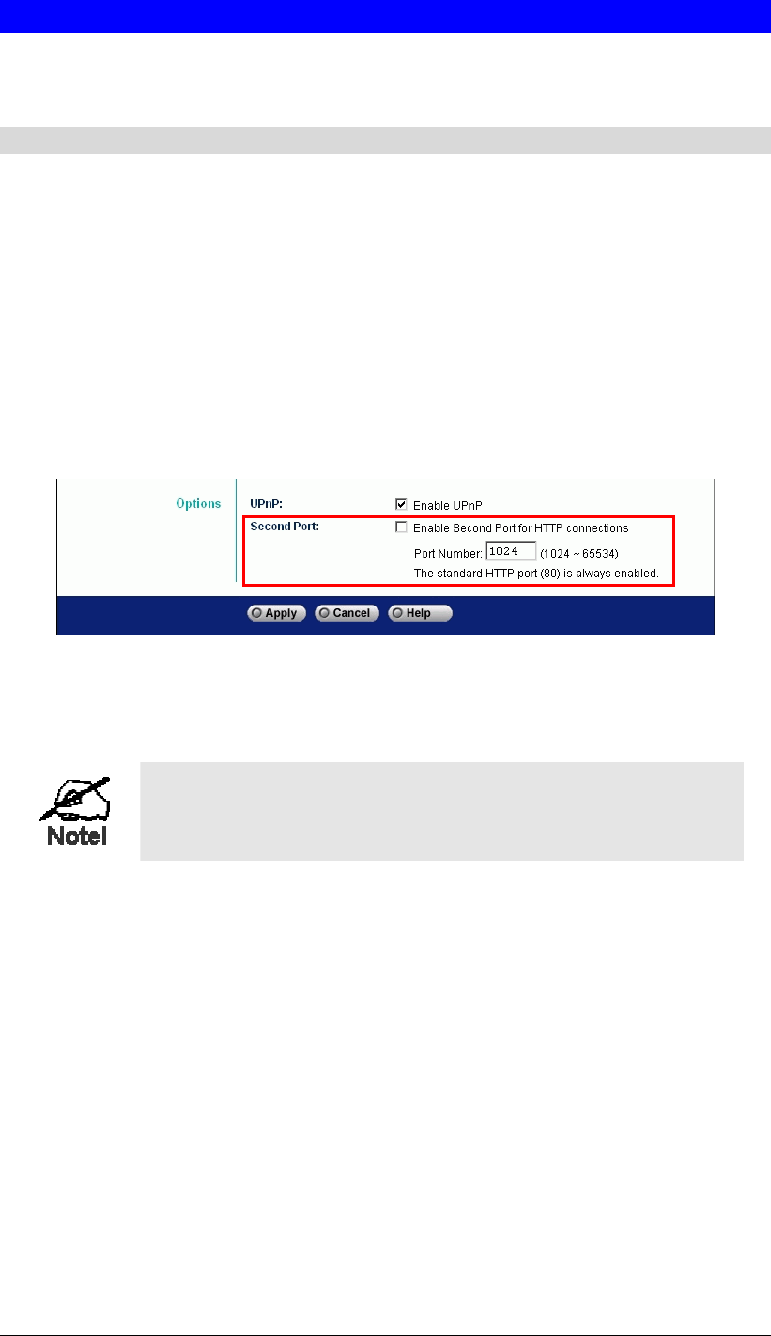
Making Video available from the Internet
If your LAN is connected to the Internet, typically by a Broadband Gateway/Router and
Broadband modem, you can make the LevelOne IP Network Camera available via the Internet.
LevelOne IP Network Camera Setup
The LevelOne IP Network Camera configuration does NOT have be changed, unless:
• You wish to change the port number from the default value (1024).
• You wish to use the DDNS (Dynamic DNS) feature of the LevelOne IP Network Camera.
Second Port Configuration
Normally, HTTP (Web) connections use port 80. Since the LevelOne IP Network Camera uses
HTTP, but port 80 is likely to be used by a Web Server, you can use a different port for the
LevelOne IP Network Camera. This port is called the "Second Port". (The first port is port 80.)
The default "Second Port" number is 1024. If you prefer to use a different port number, you
can specify the port number on the LevelOne IP Network Camera's Network screen, as shown
below.
Figure 14: Network Screen
The Network screen is part of the Web-based Administration interface. See Chapter 4 - Web-
based Management for further details on using this interface.
Viewers need to know this port number in order to connect
and view live Video, so you must inform viewers of the
current port number.
DDNS (Dynamic DNS)
Many internet connections use a "Dynamic IP address", where the Internet IP address is
allocated whenever the Internet connection is established.
This means that other Internet users don't know the IP address, so can't establish a connection.
DDNS is designed to solve this problem, by allowing users to connect to your LAN using a
domain name, rather than an IP address.
To use DDNS:
1. Register for the DDNS service with a supported DDNS service provider. You can then
apply for, and be allocated, a Domain Name.
2. Enter and save the correct DDNS settings on the Network screen of the LevelOne IP
Network Camera.
14


















